Forty years after Yamaha's RD350LC went out of production, we remember the bike that launched many a high-profile racing career
The two-stroke twin seemed to run better in cold air. So at dusk, my friend and mechanic, Graeme Rogers, and I would sneak out to a long section of straight road a few kilometres from town with my RD350LC. We’d park Graeme’s Holden Monaro and the trailer in the grass and unload.
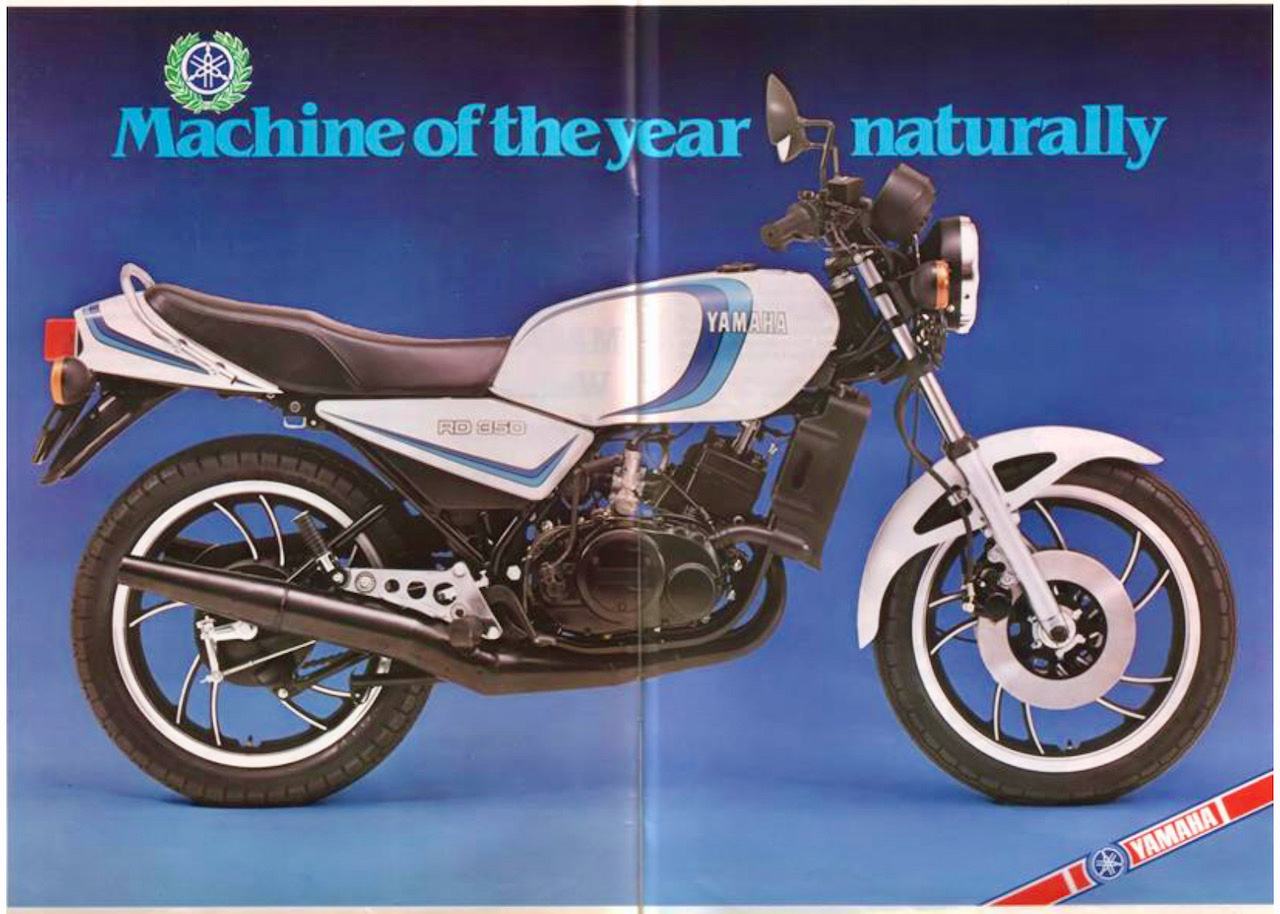
A strip of unmarked bitumen in front and behind, paddocks on either side. No cars anywhere. A perfect opportunity to tweak the tuning and practice race starts. Between 7000 and 9000rpm, the Yamaha RD350LC grew wings.
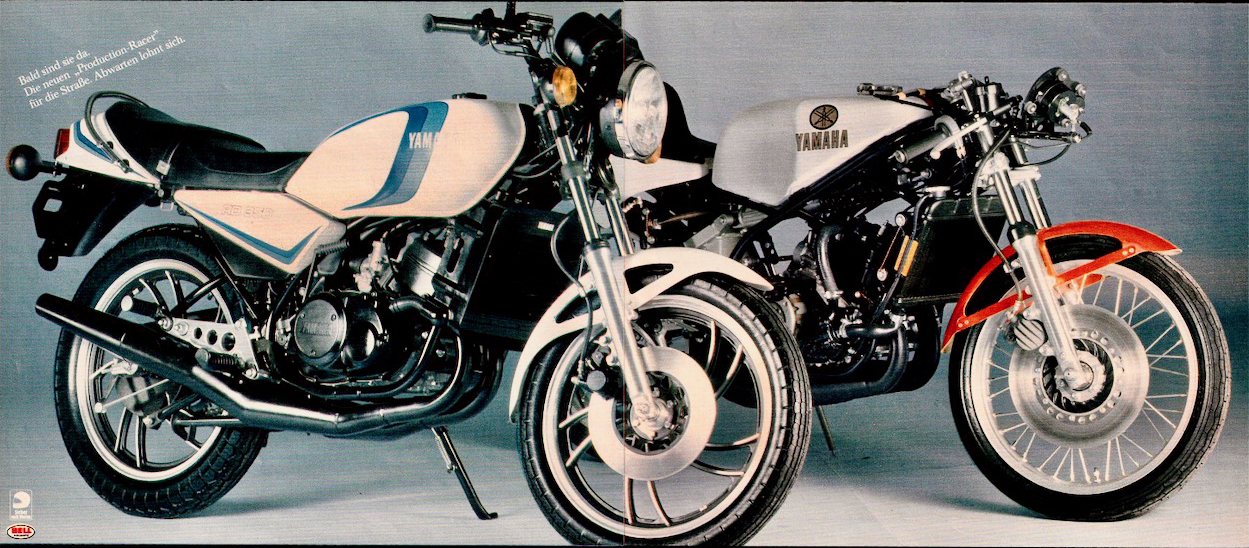
Racing connection: the RD was inspired by Yamaha’s GP hardware
I was 21 years old and learning to keep the front wheel close to the ground from a standing start. I’d lean over the tank, rev the engine and try to slip the clutch the right amount – between bogging down and looping the bike. I’d start about 400m away from Graeme and upshift quickly, keeping the engine spinning as I passed him – grinning, but studied on the side of the road. At 160km/h, he could hear it sing.

Some last-minute tweaks to Keith’s RD350LC
Within a few months, Graeme and I declared ourselves a team and had some “SR Racing” stickers made up to prove it. We stripped off the blinkers, lights and a few other bits and pieces and inverted the handlebars which Graeme said would give me a more Kenny Roberts-like look on the track. It wasn’t, however, a bike for everyone. The liquid-cooled twin was inspired by Yamaha’s grand prix-winning TZ racebike. Rather than a power curve per se, the 350LC had a “trigger” at around 7000rpm and a wafer-thin power band of around 2000rpm.

So iconic, the RD350LC had races built around it, not only in Australia, but around the world – in the UK, France, Germany and elsewhere and a number of very good riders got their road racing starts on it, including Australia’s former 500cc grand prix rider Kevin Magee and, in the UK, Niall Mackenzie, a long-time grand prix rider for Suzuki, Honda and Yamaha factory teams and a three-time British Superbike title winner.

LC action in France – the giveaway Gauloises sponsorship!
Magee remembers the RD350LC as a lightweight that eagerly took on the heavyweights.
“You could have a crack at guys on 750s and 1100s. A giant killer if you grabbed it by the horns and rung its neck,” he says.
A 19-year-old Magee won the 250cc series in 1981 and swapped to a borrowed 350cc machine for the 1982 series, which he also won. He took the trophy in the final round at Sandown Raceway, six years before winning the Spanish Grand Prix ahead of American Eddie Lawson and another Australian legend, Wayne Gardner.

Magee’s pint-sized prize for winning the 350 LC series. Time for a haircut, too, Magoo…
On the other side of the world in 1982 another future grand prix rider, Mackenzie, was getting a similar start in the RD350LC pro-am series in the UK. He recalls the bike as making for “great racing” and the pro-am series as a springboard.

Keith and the LC before hitting the straights and esses of Calder Park Raceway
Magee, who competed in 36 grand prix races from 1987 to 1993, began road racing in 1980 on an air-cooled Yamaha RD250F, ordered an RD250LC as soon as Yamaha announced its release and won the first (1981) Milledge Yamaha RD250LC series by a single point in a hard-fought contest.
He told AMCN that he switched to the larger, borrowed 350cc machine in 1982 to move through the ranks. Watching the top Australian superbike riders of the day was “killing me,” he said.“The LC series definitely accelerated my progress.”
He recalls riders in the series as being “reasonably well behaved”, although says it was closely contested and passing other riders was “actioned, not negotiated”.
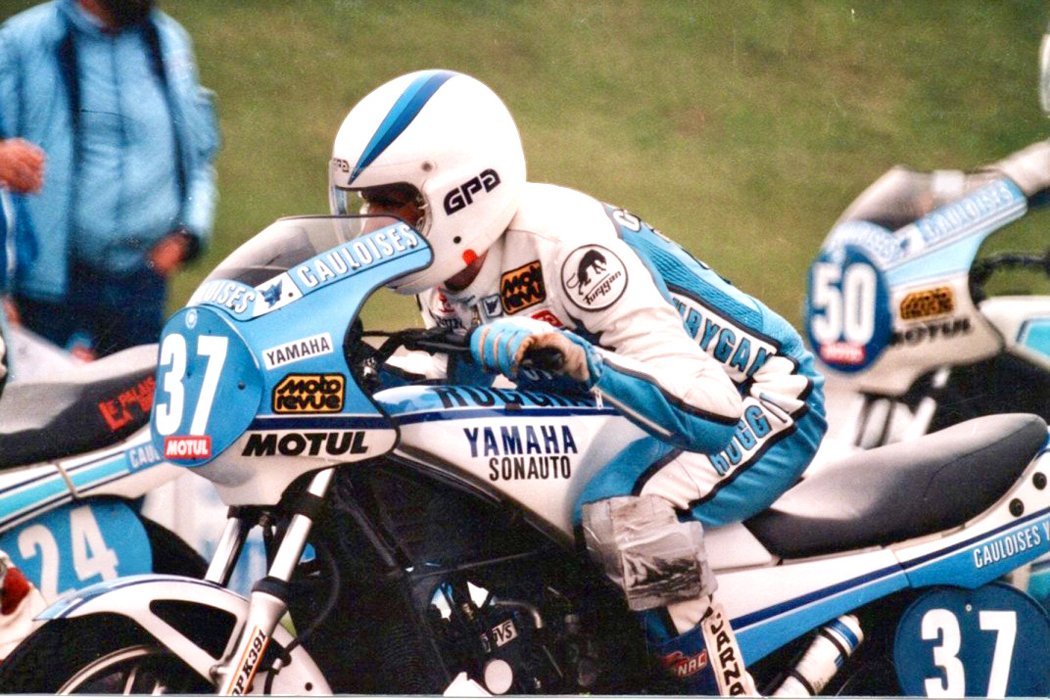
French action, and a trick livery to boot
While preparing his bike for the final round of the series in 1982, Magee was approached by Bob Brown, of Bob Brown Ducati, to ride in the Peter Stevens Thunderbike Series. That weekend, Magee clinched the Milledge series for a second time, won both legs of the Thunderbike event and launched seriously into a career racing motorcycles.
Mackenzie, who had a 20-year racing career, including 10 years on the grand prix circuit, told AMCN that riding in the pro-am series as a 21-year-old in 1982 was “a dream”. “Free racing, fantastic prizemoney and banging handlebars with mates.”
Like Magee, Mackenzie had been a boyhood fan of the air-cooled Yamaha RDs and, when he saw an image of the first RD350LC in a motorcycle magazine, he became “obsessed with owning one”.

Mackenzie began racing his LC in club races in Scotland and the north of England in 1981, and was given a one-off ride in the pro-am series that year when the race was held in Knockhill. He started at the back of the grid and finished fifth. When he wasn’t selected for the series in 1982, he was devastated, but didn’t give up. He jumped in a van with his bike and drove to Oulton Park and told the organisers they needed “the best LC racer in Scotland to be part of the show”.
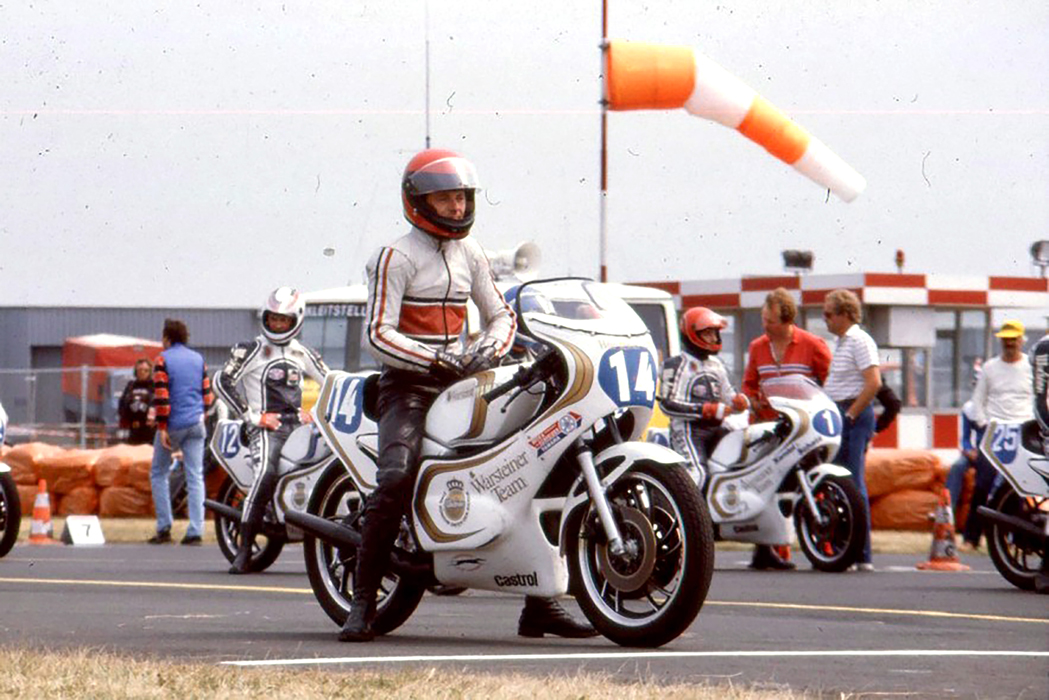
Germany also got in on the crowd-pleasing LC racing act
The ploy worked. Mackenzie raced in the pro-am championship in 1982 and 1983, winning a number of races and finishing fifth and second overall, good enough to score him a ride in his first grand prix on an Armstrong-Rotax CF250 in 1984. He recalls that at the time, a single race win in the pro-am series paid more than five times his weekly salary as a labourer with the Scottish National Electricity Company.
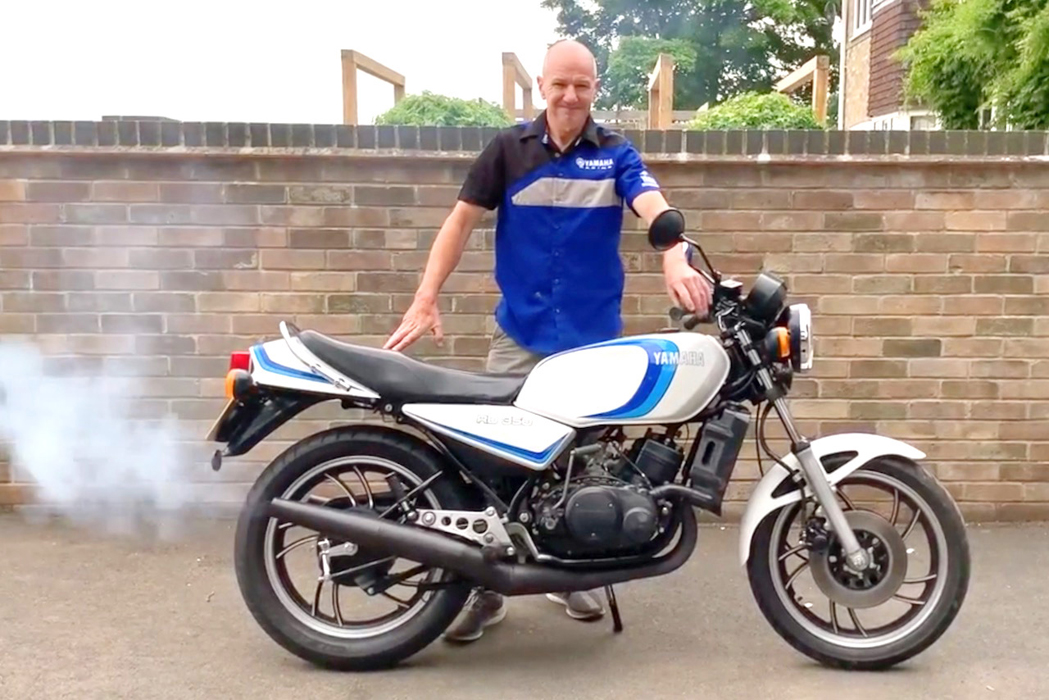
Mackenzie still has the LC he competed on in the 1980s
“We were all hairy-arsed council kids and it was free bikes, nobody cared if you crashed, there was no budget, no briefing where you were told not to do anything daft,” he told Motorcycle News in 2015. “It was a free-for-all.”
In Australia, 250cc and 350cc LC races were held in Victoria, Queensland and South Australia. The most publicised was the Milledge Yamaha-sponsored series in Victoria. The Milledge series was hotly contested and ran in its original form from 1981 until 1983, when the LC was superseded by the RD350 YPVS.

A wafer-thin powerband made for an interesting roadbike
Unlike the pro-am series, the Milledge series had ‘improved touring’ status which allowed modifications such as changes to porting, expansion chambers, non-standard carburettors and slick tyres. It wasn’t uncommon for the faster wheelie-pulling 350s to top out at well over 200km/h. The lap record at Calder for improved touring bikes up to 600cc was held for two years by the winner of the 1983 350LC series, Geoff Winzer.
Winzer remembers his modified 350LC as a “magnificent” bike. “You could hold it at 12,000 to 13,000rpm”, he told AMCN. “I remember passing a GS1000 going up the hill at Bathurst. He didn’t get me until halfway down Conrod Strait. I topped out at 227km/h.”

The UK pro-am series was held on identical stock-standard RDs
As well as its extra power, the 350LC handled notably better than its air-cooled RD400 predecessor, due in part to a new chassis and monoshock rear suspension.
The 350LC pro-am series in the UK was broadcast on television, provided some of the most hard-fought production racing in Europe and was generally referred to as the “maddest” one-make race series ever held.
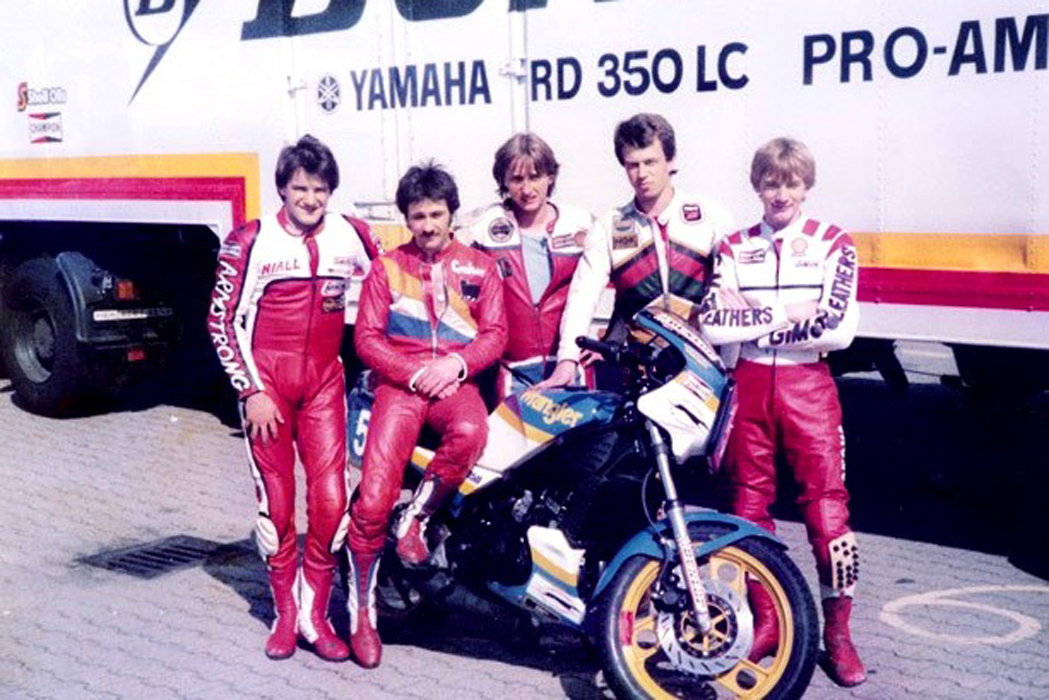
UK Pro-am series was a brilliant environment to help develop racecraft – alongside dollops of bravery!
It featured a mix of professional and amateur riders on identical stock-standard bikes and was guest commentated on ITV World of Sport by grand prix world champion Barry Sheene. It ran on British circuits between 1981 and 1984 and launched the careers of a number of successful racers, including Mackenzie and 1996 Formula 1 car racing champion, Damon Hill.

Was PV also AMCN’s road test editor in the 1980s?
Mackenzie remembers it as “mental”. “We used to dab each other’s front brakes going along the straits, pull on the pillion grab rail of the rider in front to get a tow and even hold our own front fork to make a more aerodynamic shape,” he told Classic Motorcycle Mechanics magazine.
My own experience was less mad, but nonetheless at times eventful – testing the limits of the Michelin PZ2 road tyres in the esses at Winton, exceeding the limits of the secondhand slicks and high-siding the LC leading an event at McNamara Park.

Mostly, though, I’ll never forget the sound and feel of an on-song two stroke at dusk on an out-of-the-way country road in Victoria. Or my mate Graeme and his brown Monaro, there at the side of the road for a second and then gone.

Words Keith Scott + Photography AMCN archives & KS